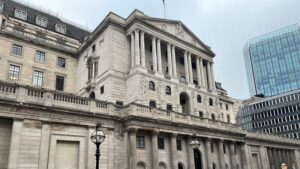As they do so, they can only encourage others to do the same, as the fellow investors they have left behind face the gnawing anxiety that the hedge funds may slam shut the exits to prevent a stampede.
It is a clear illustration of the old adage about a bank run: “If you are going to panic, panic first.”
All that said, it would be a mistake to start reading the last rites for the hedge funds. Provided they are able to adapt to very changed circumstances, the best of the funds will be able to survive and thrive. To do so, they will have to fulfil some key conditions.
They will need to tear down their gates, slim down their fees, and be more transparent. Finally, they will need to accept that, five years from now, I predict there will be no allocation to hedge funds.
Should that last part of my prognosis sound suspiciously like a death sentence, fear not – it is nothing of the kind. In place of the hedge-fund allocation will be an allocation to a total return sector that will include the most talented of the funds merging their approach with that of managers in the multi-asset, or liquid alternatives space.
Just as multi-asset managers have sought to blend the total return mind-set, and risk-control focus of hedge funds with the advantages of mutual funds in terms of lower cost, transparency and liquidity, so the blending of these two talent pools can only deliver better returns at a lower cost.
Together, they can help the market as a whole make the transition from traditional relative-return investing to total return, focusing on outcomes such as CPI+3% over rolling three-year periods, not on performance against relative return benchmarks.
With the fading of the 30-year tailwind of disinflation that sustained relative-returning investing, change is inevitable.
But this change will not express itself in uniform investment strategies. Far from it; there will be a spectrum of strategies that will require different blends of hedge-fund and liquid-alt specialists.
At one end of this spectrum, the focus will be on achieving an outcome in terms of capital appreciation.
Here, the teamwork would involve blending long biased hedge funds with growth-orientated multi-asset strategies that together invest across a range of assets with a bias towards long-only holdings that will deliver capital growth with half the volatility of equities without locking up capital for extended periods.
The other end of the spectrum will see an emphasis on capital conservation, partnering relative value hedge funds with absolute return focused multi asset strategies which blended achieve positive returns each and every year, taking share from fixed income.
Most portfolios will further blend both these approaches – capital appreciation and capital conservation – in such a way as to match the objectives of each particular client. Such blends address the concern on everyone’s mind – what happens if interest rates start to rise or stocks get too high to sustain themselves?
To end where we began, five years from now, today’s ten per cent allocation to hedge funds will be replaced by a 20 per cent allocation to total return. In the US, I would envisage institutions’ hedge-fund allocation declining to five per cent, while multi-asset strategies rise to 15 per cent.
Hedge funds will survive, but in a different form, in a different landscape and in reduced numbers.







